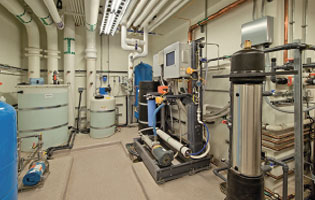PRODUCT INFORMATION
Storage and handling of ion exchange resin I
- front page
- product
- Water Treatment Technology
- Technology Development Department
- Storage and handling of ion exchange resin I
Product Information
- heat treatment
-
water treatment
- Arsenic remover
- Desulfurizer
- Deaerator
- Water softener (calcium and magnesium ion removal)
- Carbon filter (removes odor and residual chlorine)
- Sand filter (removal of suspended impurities)
- Iron remover (removal of iron and manganese ions)
- RO water purifier
- Pre-backwash filter
- UV ultraviolet sterilizer
- Ion exchange resin
- reverse osmosis membrane tube
- quick filter
- Various tanks for water treatment
- Various application filter media
- 美國 Clack Clark control valve
- 美國 Fleck Control Valve
- 美國 Pentair Control Valve
- 美國 Autotrol Control Valve
- Runxin Control Valve
- Injection treatment
- Technology Development Department
-
brand
- Demo brand
- US DOW
- IDEX USA
- US CLACK
- EMERSON, USA
- American PENTAIR
- SIEMENS Germany
- American PULSAFEEDER
- Denmark DANFOSS
- Thailand HAYCARB
- France SUNTEC
- UK PUROLITE
- Japanese NOP
- Japan OLYMPIA
- Japan KATSURA
- BRAHMA, Italy
- SAGINOMIYA
- HONEYWELL
- AZBIL (YAMATAKE)
- OLTREMARE
- NIPCON
- TROCHOID
- domestic
- EGO
- KATO
- LECIP
- ATS
- JACOBI
- ETATRON
- WAVE CYBER
- BOSCHINI
- NIPPON
- WL
- CASH ACME
- YAZAKI
- RUNXIN
- About | Contact

Storage and handling of ion exchange resin I
Technical explanation
When the resin is transported, the particles must contain water to a wet state. However, excessive humidity will cause water leakage and water accumulation, which indirectly reduces resin preservation. It should be stored in a cool place and packed in plastic bags or placed in glass bottles to keep just the right amount of moisture. Particle freezing will not cause damage but repeated freezing and thawing should be avoided.
Dried resin particles may shrink and slide easily, but they will expand immediately when exposed to water, which may cause cracks. Dry particles can be pretreated with saturated saline, and then diluted to remove salt, but this method cannot completely avoid particles because Cracks caused by expansion. Particles treated with saline, such as non-sodium ion resins, should be regenerated with an appropriate regenerant. If the resin particles are accidentally leaked, they should be removed carefully, because the small particles of resin are very easy to roll like bearing steel balls, and if they are not stepped on, it is easy to cause accidental wrestling.










